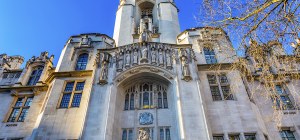753: Air quality latest

Angus Walker Partner
Today’s entry reports on recent developments on air quality protection.
Compliance with air quality targets in the UK is something of a sorry tale. There are two main targets, and one main pollutant – nitrogen dioxide – that are proving difficult to tackle. The first target is that NO2 cannot exceed 40 micrograms per cubic metre in any of 43 areas of the UK in a year, and the second is that NO2 is only allowed to exceed 200 micrograms per cubic metre 18 times in any year at any point.
EU legislation required compliance by 2010, with the possibility of a five-year extension. It is ambiguous as to whether the UK did or needed to apply for an extension, but either way, exceeding the targets after 2015 is an ongoing breach of the law. The bit to remember is that the state must secure compliance with the air quality limits in each area as quickly as possible.
How far off the two targets we are is starkly illustrated by the fact that of the 43 areas the UK has been divided into, only three were compliant by the required date: the Scottish Borders, the Highlands, and Blackpool. Illuminating. Even worse, the 18-times-a-year limit had been breached 1,142 times at Putney High Street ten days before the end of 2016.
There has been a lot of litigation on this, led by campaigning body ClientEarth. It took the UK to court shortly after the end of 2010, when the original date for compliance was breached, and this went all the way to the Supreme Court, the Court of Justice of the European Union and back to the Supreme Court before judgment was given in ClientEarth’s favour in April 2015.
The court decided that the UK was not securing compliance as quickly as possible, and needed to produce a revised national air quality plan that would do so by the end of 2015.
Accordingly, the government produced a revised plan on 17 December 2015. ClientEarth took them to court again on the grounds that the revised plan was still inadequate and wouldn’t achieve compliance as quickly as possible. They won again on 2 November 2016 and the government were ordered to produce a draft revised plan by 24 April this year and a final plan by 31 July. That judgment was quite damning as it said the government’s plans were based on what it knew were optimistic measurements of pollution, particularly from diesel vehicles.
24 April approached and there was no sign of the draft plan. It turned out that the government had applied to the High Court to delay the production of the draft to avoid the local election campaign, which finishes this Thursday. And then in a dramatic move at 7pm on Friday 21 April, it applied to delay the production of the draft until after the general election, one working day before it was required to produce it, and also delay the final plan in consequence, until 15 September.
The case was heard last week and judgment was issued on Thursday, almost two years to the day since the Supreme Court judgment. The government lost again, although it did manage to get a two-week extension for the draft plan until 9 May to avoid the local elections, but no consequent extension for the full plan.
I had thought there might be some interesting case law on what the effect of ‘purdah’ was on decisions such as this, but the case turned on the not delaying achievement of the limits point – to delay production of the plan would do so, and therefore wasn’t allowed, purdah schmurdah.
We now wait for bated breath (literally – bated means abated) for the revised draft plan, which will no doubt be scrutinised closely by ClientEarth and others as to whether it is a list of existing measures like the last one or contains new things that will achieve compliance as quickly as possible. While the High Court judge said that stopping cars in all cities instantly would be going too far as disproportionate, measures could not be ignored just because they cost a lot. This could have implications for projects that will affect air quality, so it is certainly worth keeping an eye on.










